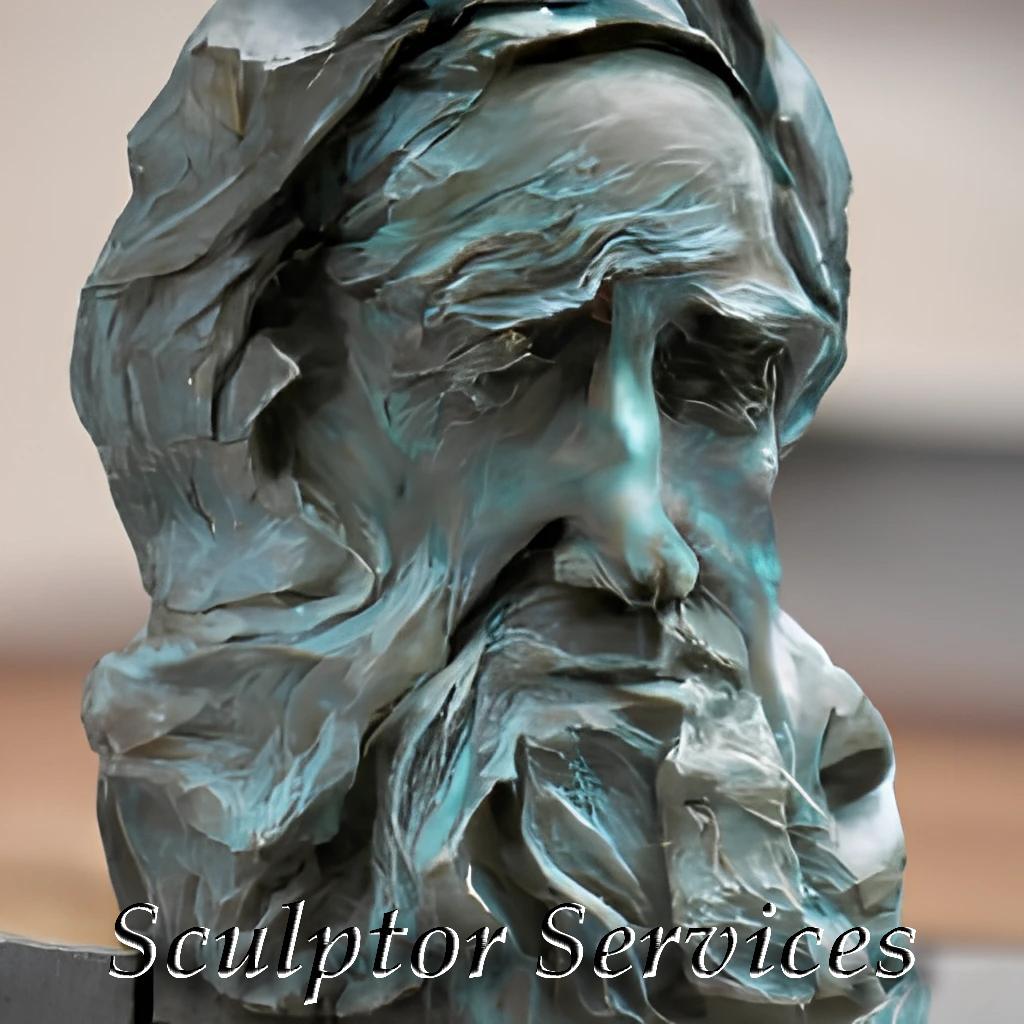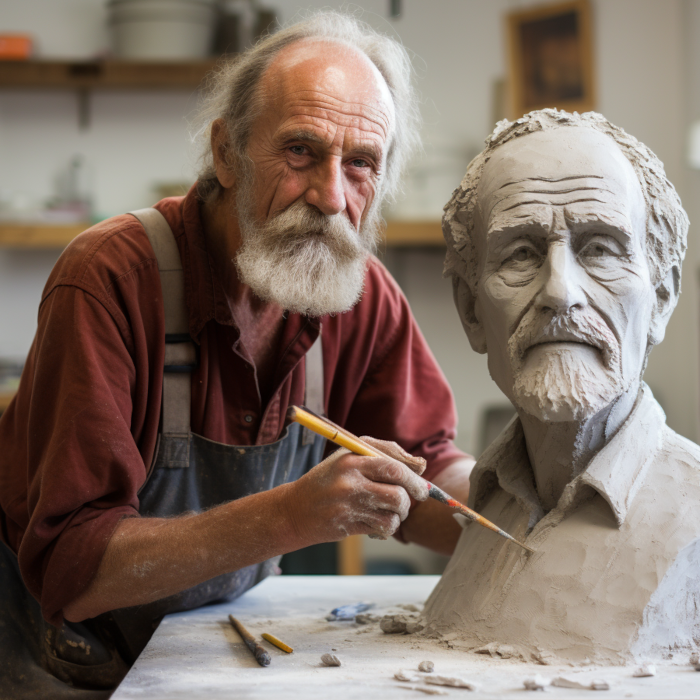


Sculptors are artists who breathe life into formless materials, shaping them into captivating masterpieces. Whether creating timeless monuments, contemporary installations, or personalized sculptures, sculptor services play a vital role in turning artistic visions into tangible works of art. In this comprehensive guide, we will explore the realm of sculptor services, offering insights into the world of sculpting and providing tips for those seeking to commission or collaborate with sculptors.
Understanding Sculptor Services.
Explore Diverse Styles:
Tip: Sculptors often specialize in specific styles, whether classical, abstract, figurative, or contemporary. Explore different artists and their portfolios to find a sculptor whose style resonates with your artistic preferences.
Material Expertise:
Tip: Sculptors work with a variety of materials, including stone, metal, wood, clay, and more. Each material offers unique challenges and possibilities. Choose a sculptor with expertise in the material that best suits your vision.
Consider Scale and Location:
Tip: Consider the scale of the sculpture and its intended location. Sculptors experienced in creating large-scale outdoor installations may have different expertise than those focused on smaller, indoor pieces.
Review Portfolios:
Tip: Before engaging a sculptor, thoroughly review their portfolio. Look for a diverse range of projects, attention to detail, and consistency in delivering quality work.
Commissioning Process:
Tip: Understand the sculptor's commissioning process. This typically involves initial consultations, design proposals, material selection, and ongoing communication throughout the creation process.
Legal and Ethical Considerations:
Tip: Ensure that the sculptor adheres to legal and ethical standards. This includes clear contracts, copyright considerations, and adherence to environmental and safety regulations, especially for public installations.
Budget and Timeline:
Tip: Discuss the budget and timeline openly. A transparent conversation about costs, payment schedules, and expected completion dates helps both parties manage expectations and ensures a smooth collaboration.
Tips for Commissioning Sculpture.
Define Your Vision:
Tip: Clearly articulate your vision for the sculpture. Provide the sculptor with as much detail as possible about the theme, concept, and emotions you want the piece to convey.
Collaborate on Design:
Tip: Collaborate on the design process. Sculptors often value client input and may provide sketches or digital renderings to ensure the final piece aligns with your vision.
Visit the Studio:
Tip: If feasible, visit the sculptor's studio. Seeing the artist's workspace and gaining insight into their creative process can enhance your understanding of the sculptor's approach and dedication to their craft.
Material Selection:
Tip: Discuss material options with the sculptor. Different materials offer varying textures, colors, and durability. The choice of material can significantly impact the overall aesthetic and longevity of the sculpture.
Regular Updates:
Tip: Request regular updates on the progress of the sculpture. This can include photos, videos, or in-person visits to the studio. Open communication ensures that any adjustments or refinements can be made during the creation process.
Collaborate on Installation:
Tip: Collaborate on the installation process. Discuss the location, base, and any additional considerations for displaying the sculpture. The sculptor's expertise can contribute to optimal presentation and longevity.
Sculpture Care and Maintenance.
Climate Considerations:
Tip: Consider the local climate when placing outdoor sculptures. Certain materials may require specific maintenance to withstand weather conditions, and regular inspections help identify any issues early on.
Cleaning and Preservation:
Tip: Follow the sculptor's recommendations for cleaning and preservation. Different materials require specific care, and using the wrong cleaning methods can damage the sculpture over time.
Documentation and Insurance:
Tip: Document the sculpture with photographs and keep detailed records of its creation. This documentation is valuable for insurance purposes and can aid in restoration efforts if needed.
Professional Restoration:
Tip: If restoration becomes necessary, consult with the original sculptor or a professional conservator. Proper restoration ensures the artwork retains its integrity and value.
Unique Sculpture Installations.
Interactive Installations:
Tip: Consider interactive sculpture installations. Sculptors can create pieces that invite audience participation, adding a dynamic and engaging element to the artwork.
Site-Specific Sculptures:
Tip: Explore site-specific sculptures tailored to a particular location or theme. These pieces are designed to harmonize with their surroundings and contribute to the overall ambiance of the space.
Collaborative Projects:
Tip: Engage in collaborative projects with sculptors. Collaborations between artists and clients often result in unique, one-of-a-kind pieces that reflect a shared creative vision.
Sculptors are artists who create three-dimensional works of art by carving, modeling, or casting materials such as stone, metal, clay, or wood. The monumental sculpture is a branch of sculpture that involves creating large-scale works, often intended for public spaces or as memorials. Monumental sculptures can take many forms, including statues, obelisks, arches, and fountains.
Sculptors and monument makers offer a range of services, including:
Custom sculpture: Many sculptors and monument makers create custom works of art for individuals, businesses, or public institutions. This may involve working with the client to design and create a unique piece that reflects their vision and meets their needs.
Restoration: Sculptors and monument makers may also offer restoration services for existing sculptures and monuments. This may involve repairing damage, cleaning and preserving the work, or adding new elements to restore it to its original state.
Installation: Installing a large-scale sculpture or monument requires specialized expertise and equipment. Sculptors and monument makers can provide installation services to ensure that the work is safely and securely placed in its intended location.
Consultation: Sculptors and monument makers may also offer consultation services for clients who are considering commissioning a work of art. This may involve advising on the design process, materials selection, and budgeting.
Public art projects: Many sculptors and monument makers create works of art for public spaces such as parks, plazas, and buildings. These projects may be commissioned by government agencies, nonprofit organizations, or private businesses.
Monuments and sculptures are related, but they are not the same thing. A monument is a structure or object that has been created to commemorate a person, event, or idea. A monument can take many forms, including statues, memorials, and plaques.
A sculpture, on the other hand, is a three-dimensional work of art that is created by shaping materials such as stone, metal, or wood. Sculptures can take many forms, including figurative works, abstract forms, and decorative pieces.
While monuments and sculptures can overlap - for example, a statue of a historical figure can serve as both a sculpture and a monument - they are not always interchangeable. A monument is typically created with a specific purpose in mind, while a sculpture may be created for purely aesthetic or artistic reasons.
While both monuments and sculptures can be works of art, a monument is a commemorative structure or object, while a sculpture is a three-dimensional work of art created by shaping materials.
Designing and creating a monument is a complex process that requires careful planning and execution. Here are some tips to consider before starting to make or design a monument:
Define the purpose: Before starting the design process, it is essential to define the purpose of the monument. Whether it is to commemorate an event or person or to serve as a public art installation, the purpose will help guide the design and ensure that it meets the intended goals.
Research: Conduct research on the subject of the monument and the surrounding area. This will help you understand the historical, cultural, and artistic context in which the monument will be placed.
Collaborate with stakeholders: Work closely with stakeholders, such as community members, historians, and city officials, to ensure that the monument meets their expectations and requirements.
Consider the site: Consider the site where the monument will be placed, including its size, shape, and location. This will help you determine the appropriate scale and materials for the monument.
Design with longevity in mind: Consider the durability and longevity of the monument. Select materials that will withstand the elements and ensure that the design is timeless and will remain relevant for years to come.
Stay within budget: Keep the budget in mind throughout the design process. Work with a qualified contractor to develop a realistic budget and stick to it to ensure that the project is completed within the established timeframe and budget.
Finding and hiring the best sculpture maker requires careful consideration of several factors. Here are some steps you can take to find and hire the right sculpture maker for your needs:
Research: Start by researching sculpture makers in your area or online. Look at their websites, portfolios, and reviews to get a sense of their style, experience, and reputation.
Define your needs: Consider what type of sculpture you need and what your budget is. This will help you narrow down your search to sculpture makers who specialize in the type of work you require and who can work within your budget.
Check references: Once you have identified potential sculpture makers, ask for references and follow up with them to get a sense of the artist's reliability, quality of work, and communication skills.
Schedule a consultation: Before hiring a sculpture maker, schedule a consultation to discuss your project, budget, and timeline. This is an opportunity to ask questions, review the artist's portfolio, and get a sense of their working style and approach.
Review the contract: Once you have selected a sculpture maker, review the contract carefully to ensure that it includes all the details of the project, including the scope of work, timeline, payment schedule, and any other important details.
Communication: Ensure that the sculpture maker is responsive to your needs and maintains open communication throughout the project. This will help ensure that you are satisfied with the final product and that any issues that arise can be addressed in a timely manner.
Sculptor services bring artistic visions to life, transforming raw materials into timeless works of art. By understanding the nuances of commissioning sculpture, collaborating with sculptors, and ensuring proper care and maintenance, individuals can fully appreciate the beauty and significance of sculptural creations. Sculptures have the power to inspire, evoke emotions, and leave a lasting impact, making them a timeless and valuable addition to any artistic or public space.
Gratefully yours,

We use cookies
We use cookies and other tracking technologies to improve your browsing experience on our website, to show you personalized content and targeted ads, to analyze our website traffic, and to understand where our visitors are coming from. Privacy Policy.